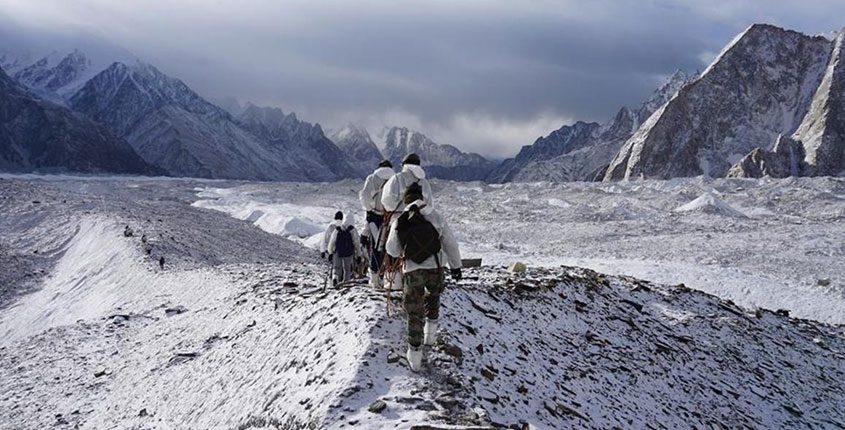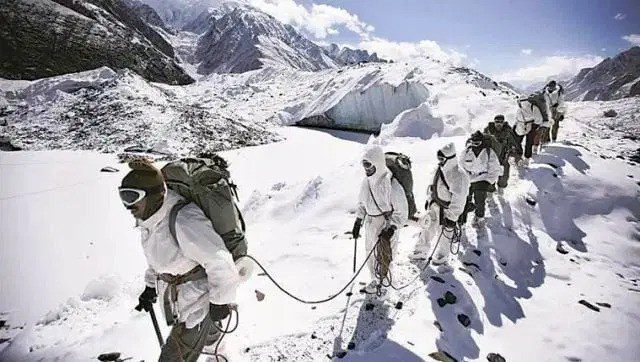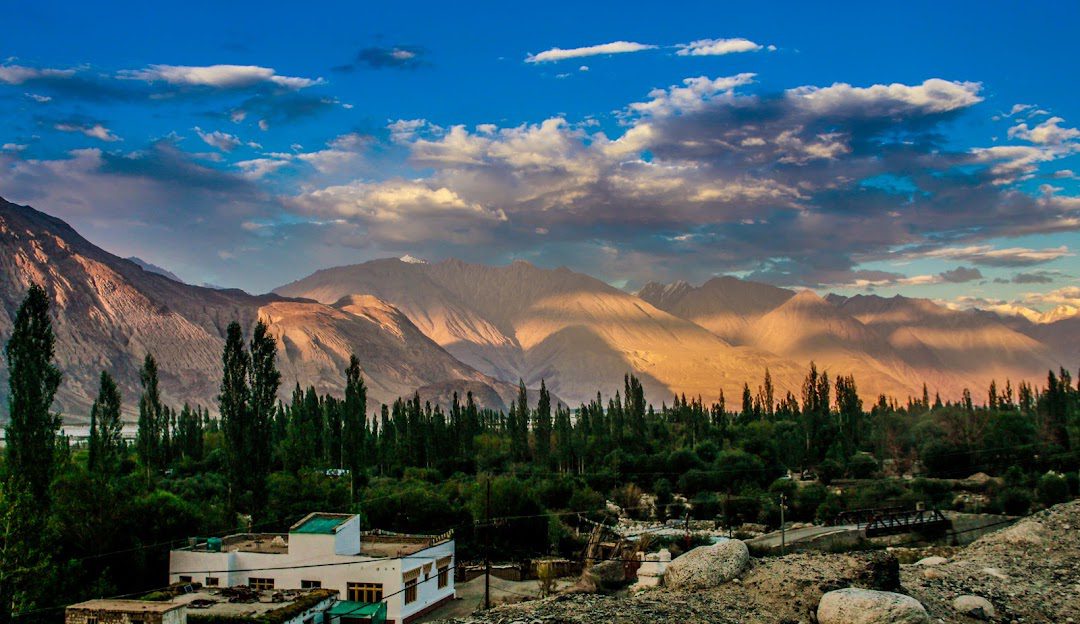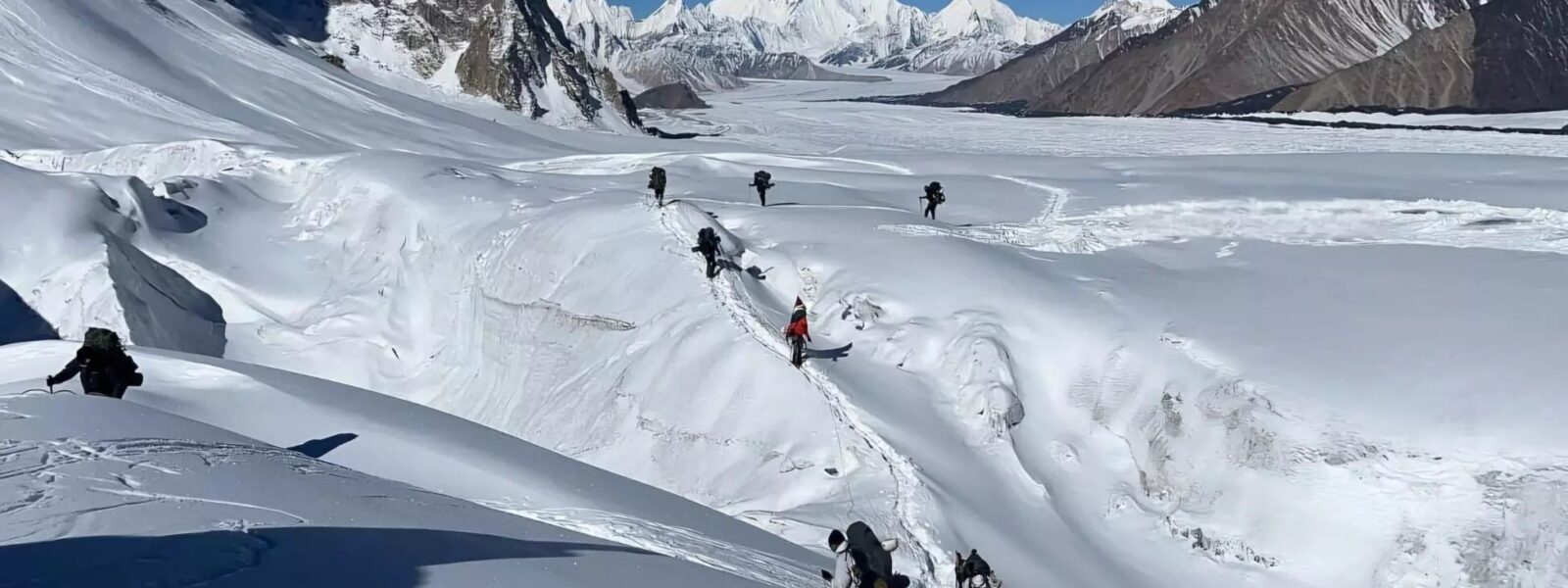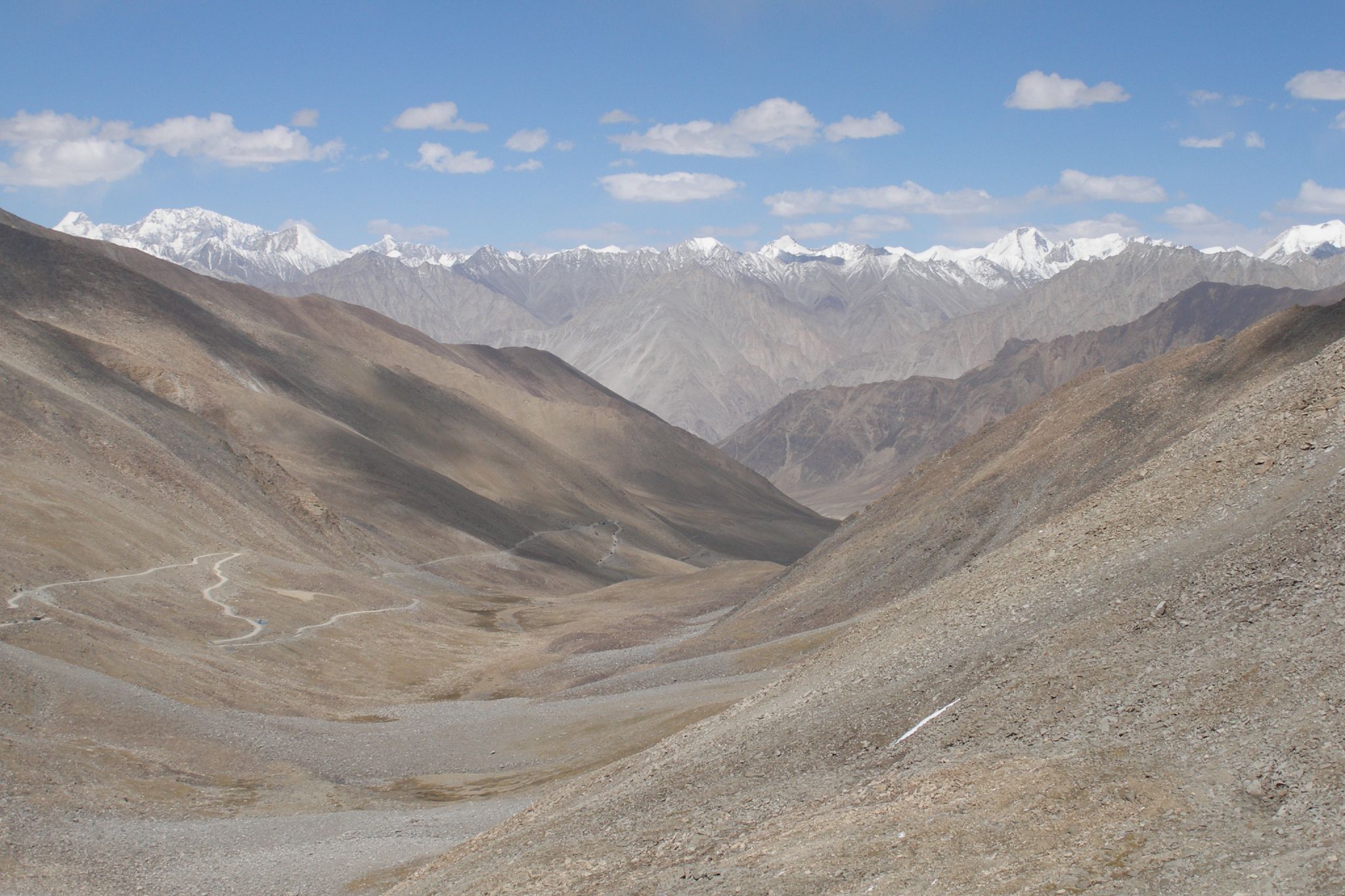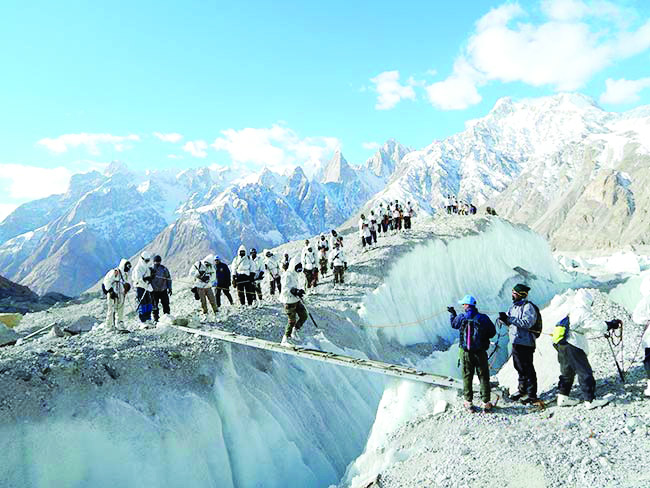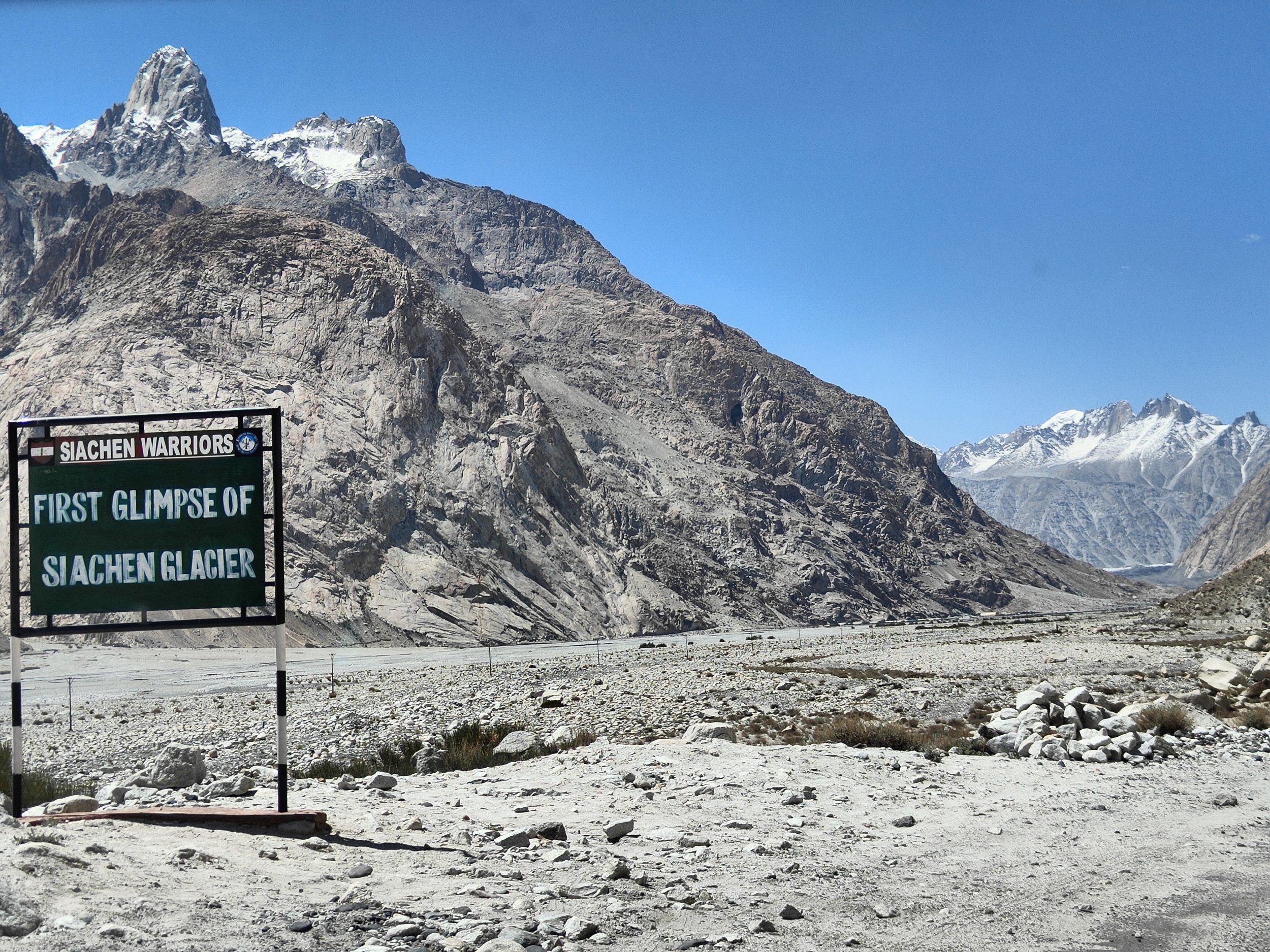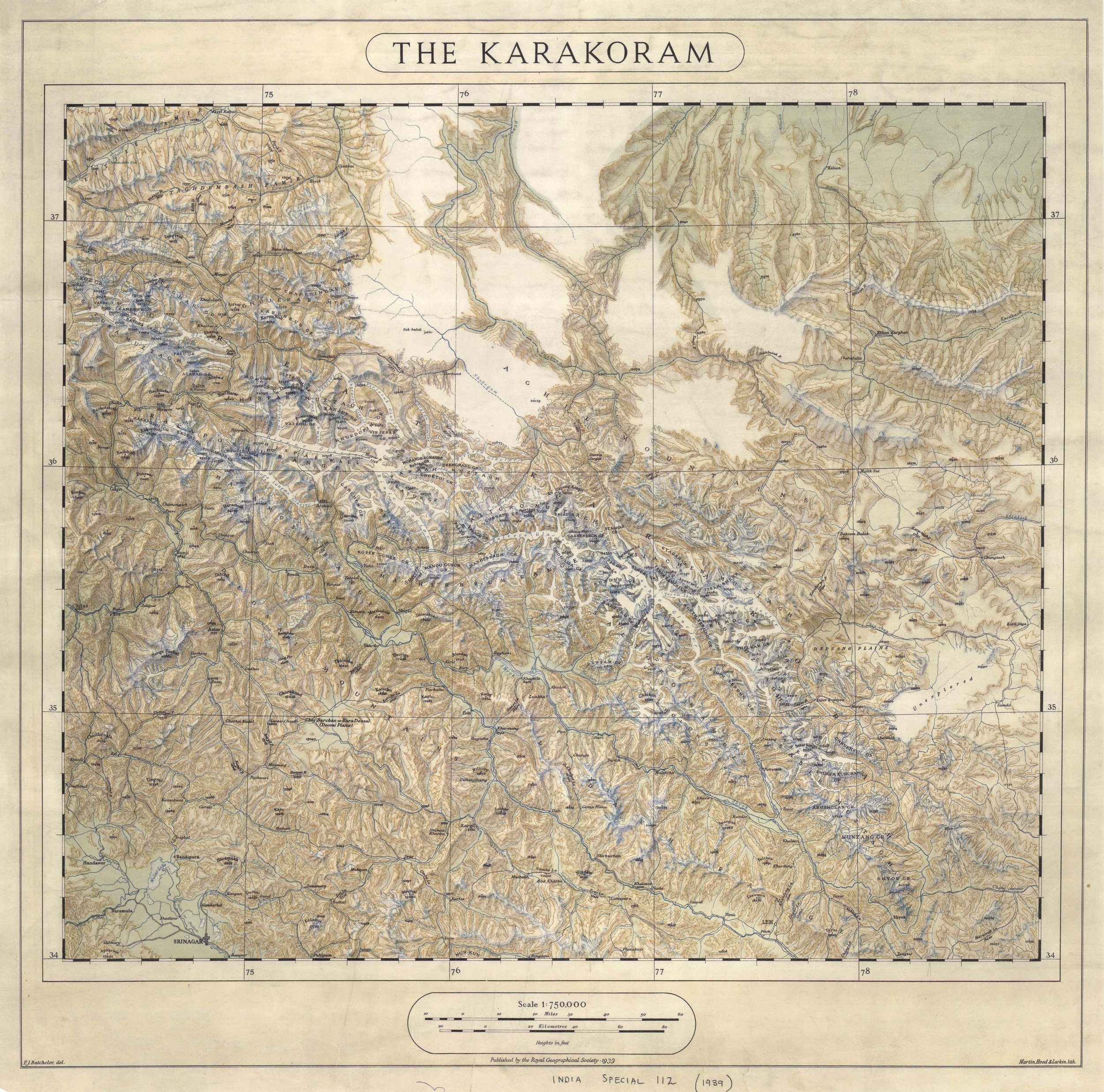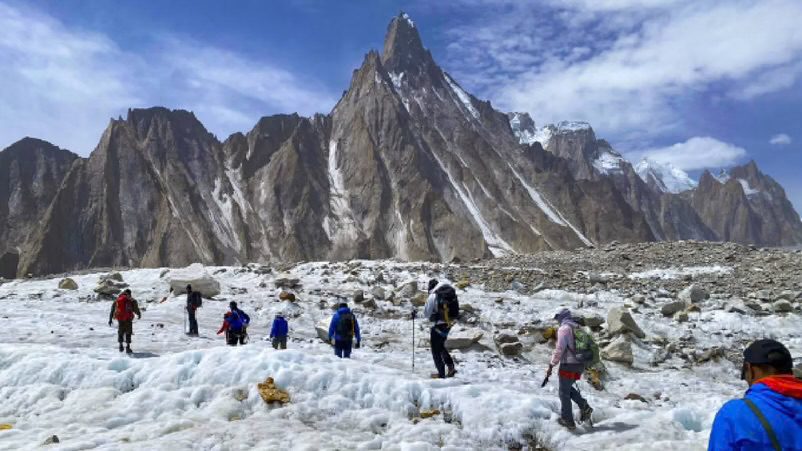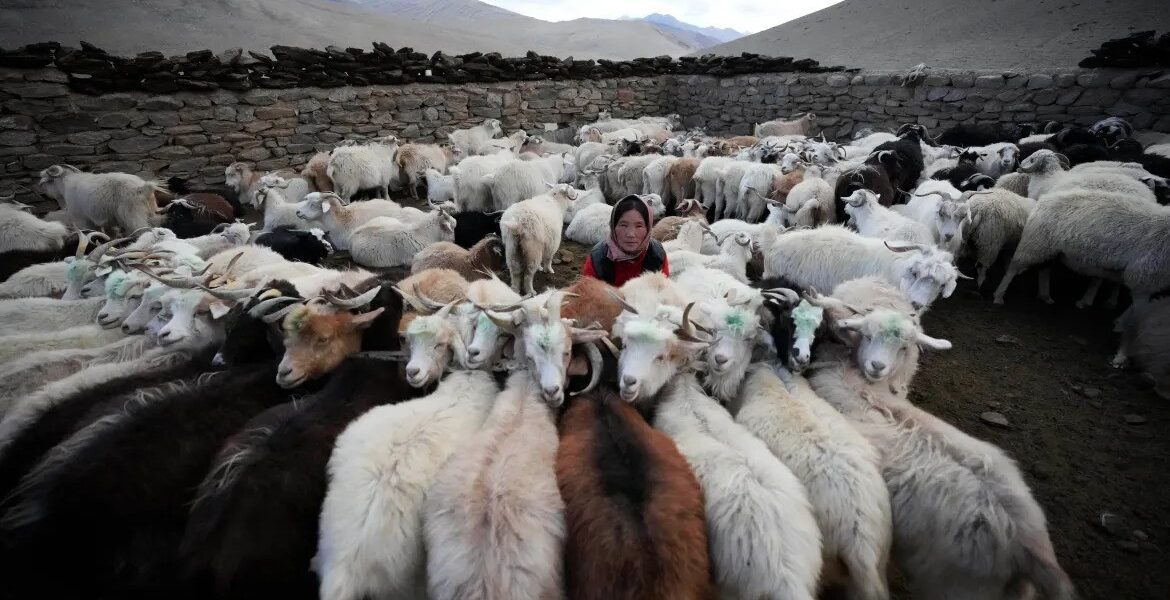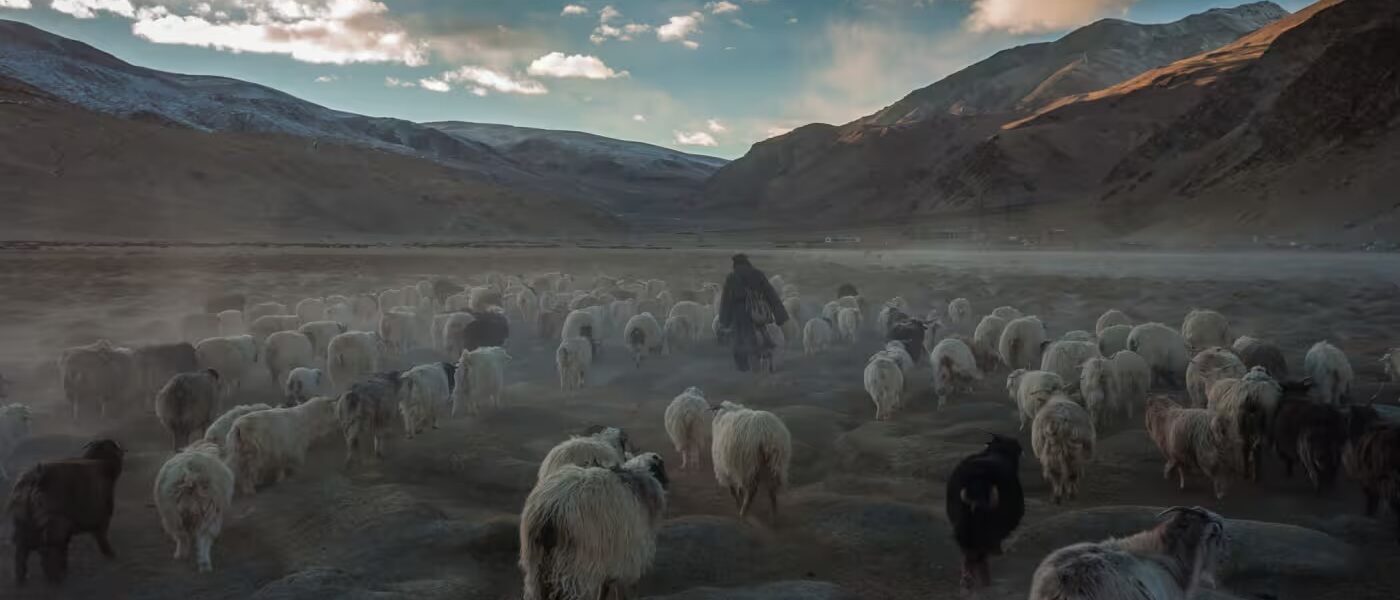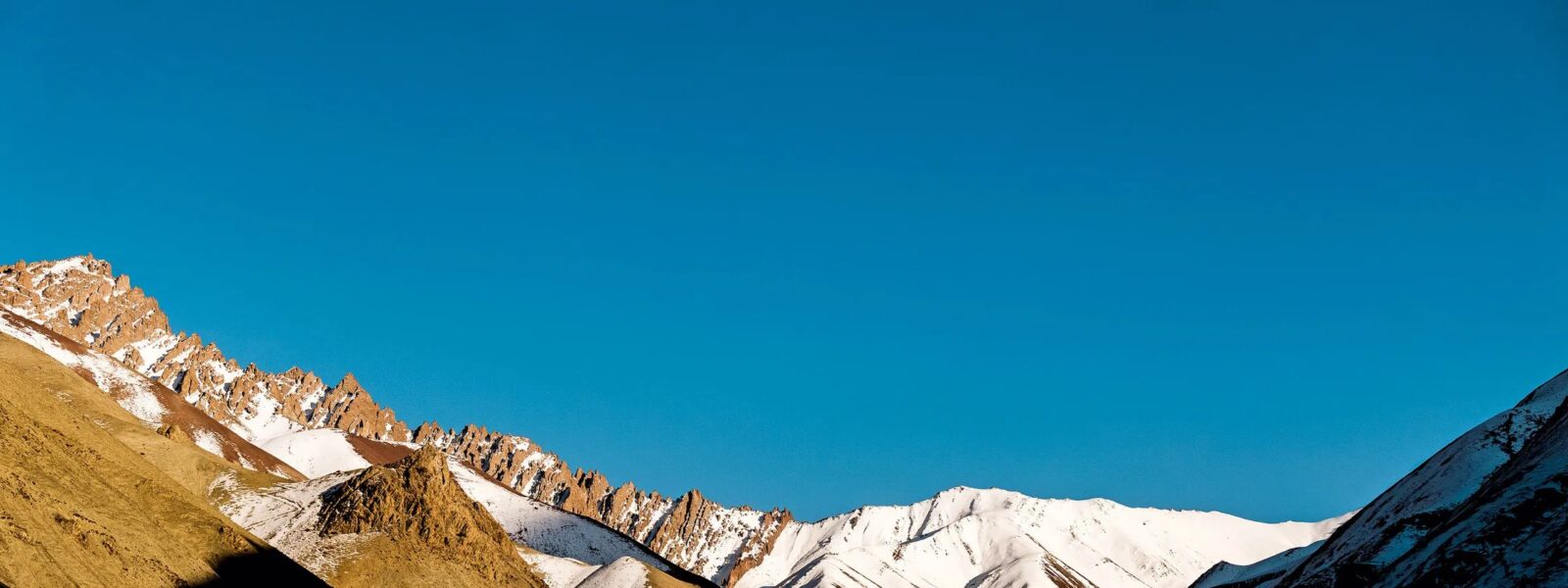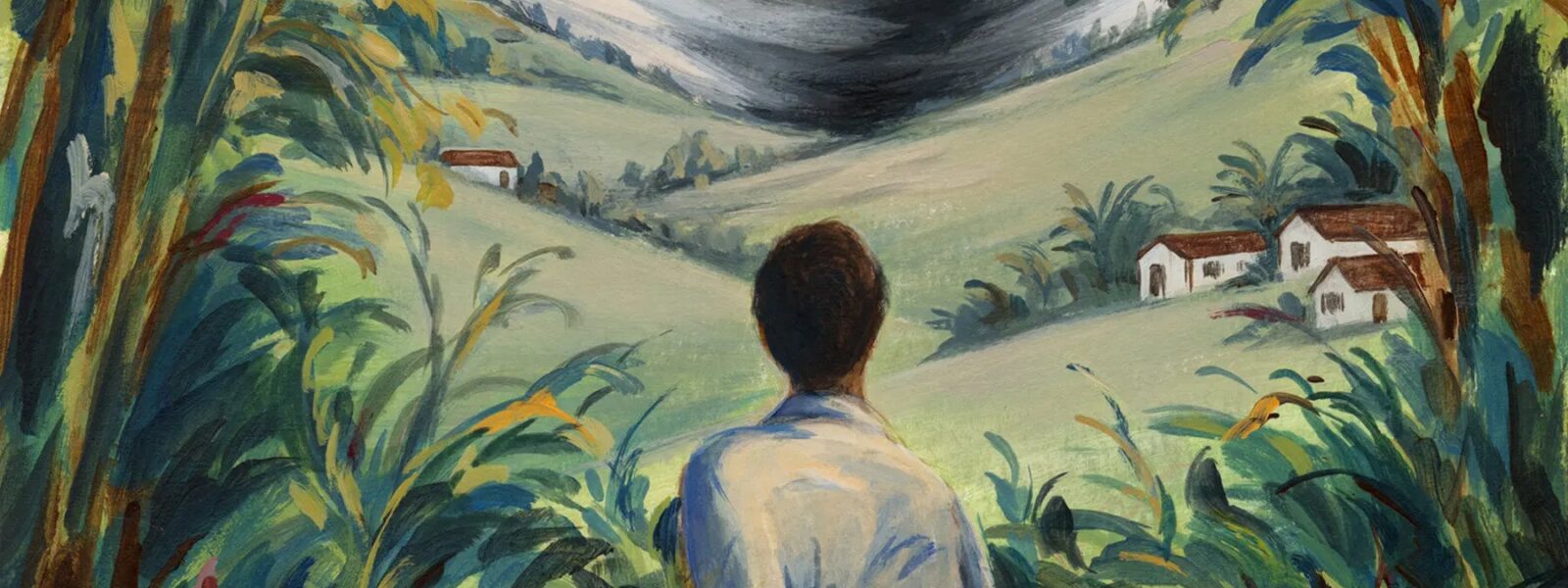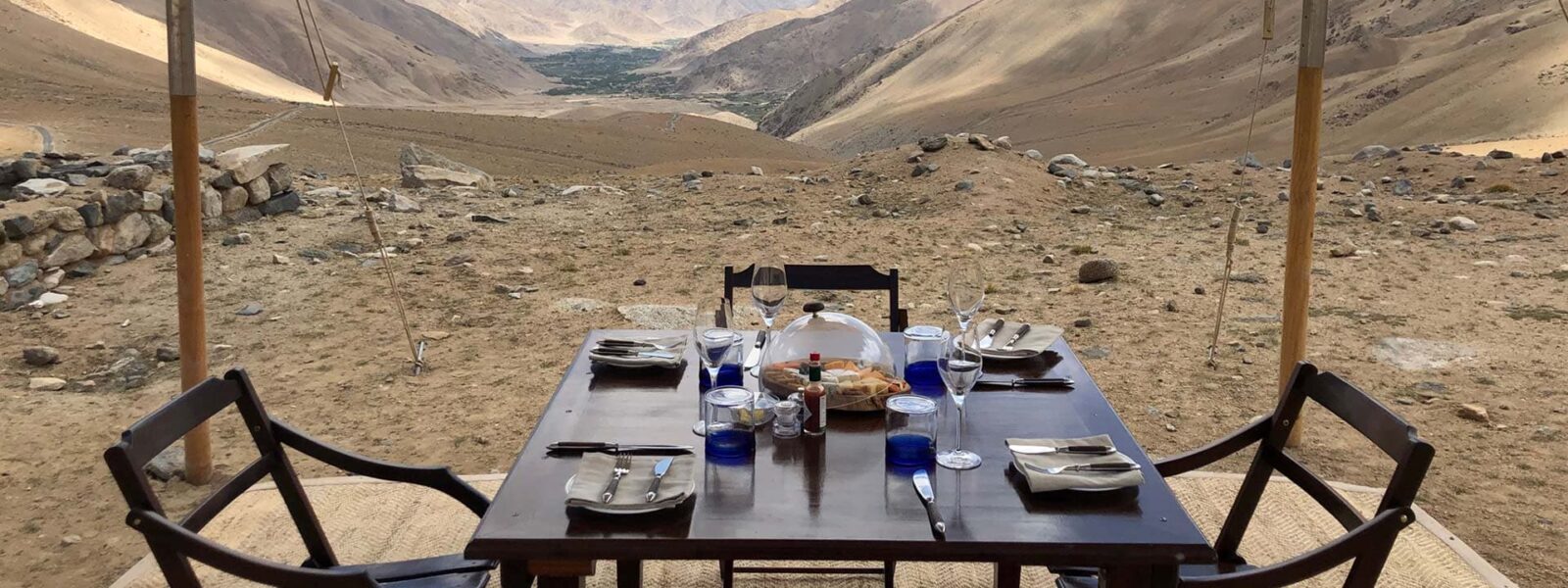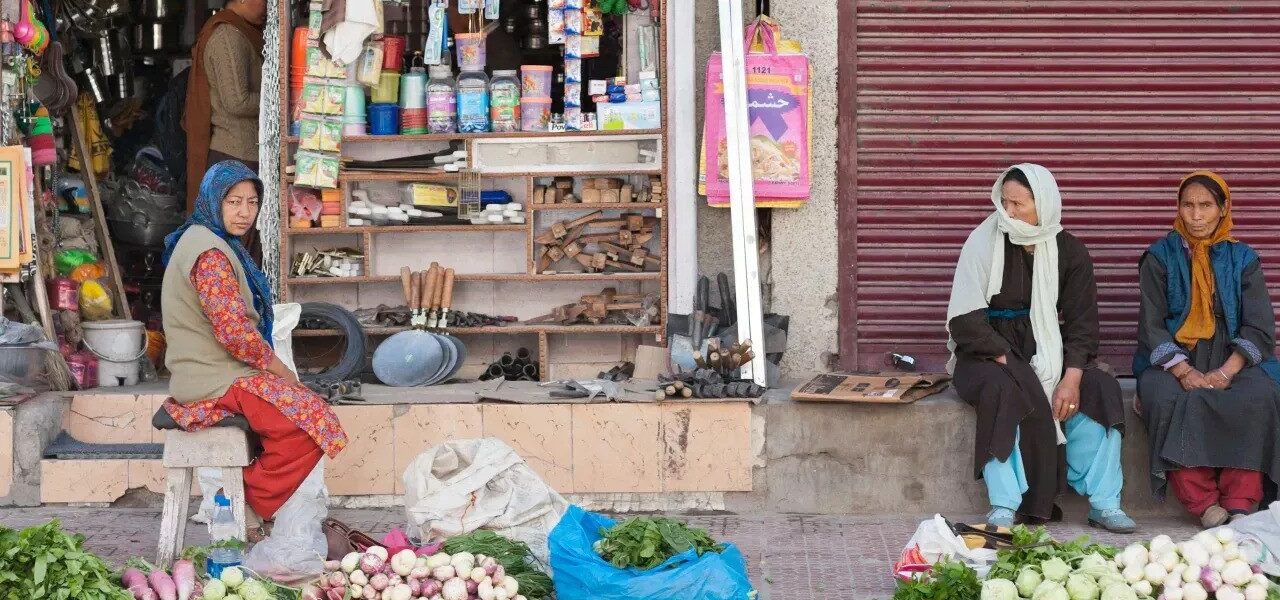Ladakh, a land of rugged beauty and cultural richness, is home to some of the most extraordinary trekking routes in the world. Among these, the Karakoram Range stands as a majestic gateway to glaciers, offering adventurers a once-in-a-lifetime opportunity to explore its remote trails, pristine landscapes, and cultural wonders. This blog post will guide you through the treks leading to the glaciers of the Karakoram, ensuring you’re well-prepared to embark on this unforgettable odyssey.
Why Trekking in the Karakoram Range is a Unique Adventure
The Unparalleled Beauty of the Karakoram Range
The Karakoram Range, part of the greater Himalayas, is a treasure trove of natural wonders. Known for its towering peaks and expansive glaciers, it offers:
- Snow-capped Mountains: Peaks that glisten under the sun, creating a mesmerizing backdrop.
- Pristine Glaciers: Vast stretches of ice, including the Siachen Glacier, one of the largest in the world.
- Unique Flora and Fauna: Home to snow leopards, Himalayan ibex, and rare alpine plants.
The stark beauty of this region makes it a dream destination for trekkers and nature lovers.
Ladakh’s Connection to the Karakoram
Ladakh’s historical and cultural ties to the Karakoram Range add depth to your trekking journey. The region serves as a gateway to these glacial wonders and offers insights into the rich traditions of its people, who have lived harmoniously with nature for centuries.

Top Glacier Treks in the Karakoram Range
Nubra Valley to Siachen Glacier Trek
- Difficulty Level: Challenging
- Distance: Approximately 60 km
- Highlights:
- Trekking along the Nubra River
- Glimpses of the mighty Siachen Glacier
- Cultural immersion in Nubra Valley villages
The Nubra Valley to Siachen Glacier Trek is a high-altitude journey that takes you through rugged terrain and stunning landscapes. Trekkers can witness the raw power of nature as they approach the icy expanse of the Siachen Glacier. This trek also offers the unique opportunity to observe the strategic importance of the glacier while staying respectful of its restricted zones.

Turtuk to Thoise Trek
- Difficulty Level: Moderate
- Distance: Approximately 50 km
- Highlights:
- Passing through Turtuk, a culturally rich Aryan valley
- Scenic views of the Shyok River
- Opportunities to camp under star-studded skies
This trek combines cultural exploration with natural beauty, making it perfect for those looking to experience Ladakh’s heritage while trekking towards the glaciers. The peaceful trails and charming local villages allow trekkers to immerse themselves in Ladakh’s unique traditions.

Pangong Lake to Karakoram Glaciers Trek
- Difficulty Level: Moderate to Challenging
- Distance: Approximately 70 km
- Highlights:
- Trekking alongside the shimmering Pangong Lake
- Stunning views of glacial streams and valleys
- Remote camping experiences
This unique trek blends the serene beauty of Pangong Lake with the rugged trails leading to the Karakoram glaciers, providing a diverse trekking experience. The route offers moments of tranquility alongside the lake’s azure waters, followed by the thrilling challenge of ascending towards glacial terrain.

Hunder to Saser La Trek
- Difficulty Level: Very Challenging
- Distance: 90 km
- Highlights:
- Crossing Saser La, one of the highest mountain passes in the Karakoram
- Views of remote glaciers and rugged peaks
- Encountering ancient trade routes
This trek demands a high level of fitness and experience but rewards trekkers with unparalleled views of the Karakoram’s grandeur. The historical significance of this route, once part of the Silk Road, adds an extra layer of fascination.

Planning Your Karakoram Trekking Adventure
Best Time for Karakoram Treks
The ideal time to trek in the Karakoram region is from June to September, when the weather is relatively stable. During this period:
- Days are warm, making trekking comfortable.
- Nights can be chilly, so layering is essential.
- Glaciers are accessible and safer to navigate.
In the winter months, the region becomes inaccessible due to heavy snowfall, making preparation and timing crucial for trekkers.
Permits and Regulations for Trekking in Ladakh
To trek in the Karakoram region, you’ll need permits such as:
| Permit Type |
Purpose |
Cost (Approx.) |
| Inner Line Permit |
Access restricted areas near the border |
INR 600 per person |
| Wildlife Permit |
Entry to protected regions |
INR 500 per person |
Ensure you carry your identification and copies of permits at all times. It’s also advisable to register with local authorities before embarking on your trek.
Trekking Gear for Glacier Trails
Packing the right gear is essential for a successful trek. Include:
- Clothing: Thermal layers, waterproof jackets, gloves, and sturdy trekking boots.
- Equipment: Trekking poles, crampons, and a good-quality backpack.
- Essentials: High-SPF sunscreen, a first-aid kit, and hydration packs.
Additionally, consider carrying lightweight but high-calorie snacks like energy bars to sustain you on long trekking days.

What to Expect on Karakoram Treks
Challenges of High-Altitude Trekking
Trekking at high altitudes can be demanding. Be prepared for:
- Altitude Sickness: Acclimatize properly and stay hydrated.
- Rugged Terrain: Navigate rocky paths and steep ascents.
- Weather Fluctuations: Be ready for sudden changes in temperature.
To mitigate these challenges, plan acclimatization days into your itinerary and carry medications like Diamox as a precaution.
Wildlife and Natural Wonders Along the Trails
The Karakoram region is a biodiversity hotspot. Keep an eye out for:
- Snow Leopards: Rare sightings in remote areas.
- Himalayan Blue Sheep: Often seen grazing near trails.
- Glacial Rivers: Crystal-clear streams fed by melting glaciers.
These encounters add a sense of wonder to your trekking journey, reminding you of the pristine wilderness you’re exploring.
Cultural Experiences on Karakoram Treks
Interacting with local communities adds a rich layer to your trekking adventure. Highlights include:
- Homestays in Villages: Experience traditional Ladakhi hospitality.
- Local Festivals: Witness vibrant cultural celebrations.
- Traditional Cuisine: Enjoy dishes like thukpa and momos.
Engage with local guides to learn more about the region’s history and traditions, deepening your connection to the landscape.
Practical Tips for a Successful Trek
Choosing the Right Trekking Guide or Agency
Hiring an experienced guide ensures safety and enhances your experience. Look for agencies with:
- Local expertise
- Positive reviews
- Sustainable trekking practices
Sustainable Trekking Practices in Ladakh
Protect Ladakh’s fragile ecosystem by:
- Carrying reusable water bottles
- Avoiding single-use plastics
- Disposing of waste responsibly
These small steps can make a big difference in preserving the natural beauty of the Karakoram region.
Budgeting for Karakoram Treks
Here’s an estimate of costs:
| Expense Type |
Cost (Approx.) |
| Guide and Porter Fees |
INR 1,500/day |
| Accommodation |
INR 500–2,000/night |
| Food |
INR 300–500/meal |
Planning your budget in advance helps ensure a stress-free trekking experience.

Nearby Attractions to Explore After Your Trek
Nubra Valley’s Hidden Gems
- Diskit Monastery: Famous for its towering Buddha statue.
- Hunder Sand Dunes: Known for Bactrian camel rides.
Glacial Rivers and High Passes
- Shyok River: A serene yet powerful waterway.
- Khardung La: One of the highest motorable passes in the world.
Customer Testimonial
“Trekking through the Karakoram glaciers was a transformative experience. The sheer beauty of the landscape and the warmth of the Ladakhi people made this journey unforgettable. Our guide was incredibly knowledgeable, ensuring our safety and enriching our understanding of the region’s culture.”
— Sofia Andersen, Engineer from Denmark
Conclusion: Embark on Your Karakoram Odyssey
The Karakoram Range offers an unparalleled trekking experience, blending natural beauty, cultural richness, and adventure. Whether you’re an experienced trekker or a nature enthusiast, the glaciers of Ladakh await your discovery. Plan your Karakoram odyssey today and step into a world of icy wonders and majestic mountains.

Q&A Section
Q: What is the best time to trek in the Karakoram Range?
A: The best time to trek in the Karakoram Range is from June to September when the weather is stable and the trails are accessible.
Q: Do I need special permits for Karakoram treks?
A: Yes, you need permits such as the Inner Line Permit and Wildlife Permit for trekking in restricted areas of Ladakh.
Q: What are the essential items to pack for a Karakoram trek?
A: Essential items include thermal clothing, trekking boots, sunscreen, a first-aid kit, and trekking poles. Carry lightweight snacks for energy.
Karakoram Odyssey
Karakoram Odyssey | The journey through Ladakh mirrors the very essence of unraveling unknown horizons, as its dramatic landscapes and unique cultural identity awaken the deepest sense of wonder and exploration. Karakoram Odyssey delves into this realm where inner peace intertwines with the wild, untouched beauty of Ladakh. From the snow-capped peaks to the serene monasteries, every step in Ladakh is a step toward self-discovery. The mountains, ancient paths, and unspoken mysteries stretch before travelers, offering a meditative experience where each encounter feels both effortless and transformative. Whether it’s trekking across remote valleys or sitting quietly beside a sacred lake, Ladakh invites those who seek a deeper connection to the natural and spiritual world.

Karakoram Odyssey
The monasteries of Ladakh stand as living monuments to the region’s profound spiritual heritage. With origins dating back over a thousand years, these ancient structures are both places of worship and repositories of art, culture, and wisdom. Hemis Monastery, one of the largest in Ladakh, is renowned for its annual festival, featuring colorful mask dances performed by monks. The history of these monasteries reflects Ladakh’s role as a crossroads between India, Tibet, and Central Asia, where religious and cultural influences have intertwined over the centuries.
The Tibetan Buddhist influence is especially evident in the architecture and daily life of the monks. Prayer wheels, intricate murals, and the soft hum of chants fill the air as visitors explore the monastery grounds. Each monastery, from the remote Lamayuru to the awe-inspiring Thiksey, offers a window into the spiritual heart of Ladakh. These centers of meditation, learning, and community life continue to thrive, preserving traditions that have shaped Ladakh for generations.
Karakoram Odyssey for Karakoram Odyssey?
Ladakh is a destination that transcends mere travel. It offers a journey that touches both the outer and inner landscapes, making it a perfect setting for those who seek to unravel their own unknown horizons. The region’s breathtaking scenery—from towering mountain ranges to hidden valleys—provides not just an escape but a space for contemplation and growth. Ladakh’s culture, deeply rooted in Buddhist practices, invites visitors to reflect on their own lives and the world around them.
Ladakh’s people, known for their warmth and hospitality, add to the richness of the experience. Villages like Sumda Chun and the legendary Nubra Valley introduce travelers to a way of life that is intricately connected to nature and spirituality. Staying in local homestays allows for immersive experiences where one can learn about traditional Ladakhi customs, share meals made from local produce, and participate in community rituals.

Beyond its natural beauty, Ladakh offers a unique opportunity to explore oneself. The vastness of the region’s plateaus and the clarity of its skies seem to mirror the vastness of the human spirit. Whether it’s standing atop a mountain pass at 18,000 feet or meditating in a centuries-old monastery, Ladakh helps unravel the unknown horizons within each traveler.
Finding the Best Karakoram Odyssey in Ladakh
Finding the best places in Ladakh to experience “Karakoram Odyssey” involves venturing off the beaten path. Ladakh’s lesser-known treks, such as those leading to secluded monasteries or high-altitude lakes, offer unparalleled opportunities for solitude and reflection. The Markha Valley trek, for instance, takes travelers through verdant valleys, ancient villages, and high-altitude passes, allowing for both physical and spiritual exploration.
Ladakh’s iconic lakes, including Pangong Tso and Tso Moriri, are ideal spots for quiet contemplation. Their still waters reflect the sky, creating a mesmerizing landscape that feels timeless and infinite. Sitting beside these lakes, especially at dawn or dusk, brings an overwhelming sense of peace and connection with nature.

For those interested in Ladakh’s spiritual heritage, exploring monasteries such as Alchi, Phyang, or Diskit can be a transformative experience. These sites are not just places of worship but also centers of art, philosophy, and wisdom. Visiting these monasteries, with their ancient murals and intricate statues, offers insight into Ladakh’s rich cultural tapestry.
Ladakh’s Atmosphere and Karakoram Odyssey
Ladakh’s atmosphere is unlike any other place on Earth. The stark contrasts between the rugged mountains and the serene, tranquil monasteries create an environment that feels both raw and sacred. The traditional decor in Ladakhi homes and religious sites reflects this balance, with mud-brick houses adorned with prayer flags and colorful thangkas (Buddhist paintings) that add warmth and spiritual meaning to the space.

The interiors of Ladakhi homes, often simple and functional, are filled with symbols of devotion. Small shrines dedicated to Buddhist deities are common, and the air is often fragrant with incense. The use of earthy materials, like stone and wood, along with brightly colored textiles, creates an inviting and peaceful space, perfect for relaxation and reflection.
Traditional Karakoram Odyssey
Traditional Karakoram Odyssey is an integral part of the region’s identity, offering a unique blend of flavors that reflect its harsh climate and remote location. Hearty, warming dishes such as thukpa (noodle soup) and momos (dumplings) provide the sustenance needed to endure Ladakh’s cold temperatures. Skyu, a thick stew made with root vegetables and barley, is another staple of the Ladakhi diet, designed to nourish both body and spirit.

Drinks like butter tea, made with yak butter and salt, are a must-try for anyone visiting Ladakh. This rich, savory drink is not only warming but also hydrating, making it essential for those venturing into the high-altitude regions of Ladakh. Chang, a local barley beer, is often enjoyed during festivals and community gatherings, adding a sense of joy and camaraderie to any occasion.
Live Cultural Karakoram Odyssey in Ladakh
Ladakh is home to a vibrant cultural scene, with festivals and live performances held throughout the year. The Hemis Festival, which celebrates the birth of Guru Padmasambhava, is one of the largest and most famous events in the region. Monks dressed in elaborate costumes perform cham dances, which depict the triumph of good over evil. The energy of the festival, with its bright colors, rhythmic music, and elaborate rituals, draws visitors from around the world.
Other local festivals, such as the Losar (New Year) and Ladakh Festival, provide visitors with the chance to witness traditional dance, music, and crafts that have been passed down through generations. These events are more than just entertainment; they are a celebration of Ladakh’s rich cultural heritage and its deep connection to the spiritual world.
Trekking and Outdoor Activities Karakoram Odyssey
Ladakh is a trekker’s paradise, offering some of the most stunning and challenging routes in the world. From the famous Karakoram Odyssey, which follows the frozen Zanskar River, to lesser-known routes like the Sham Valley or Nubra Valley treks, Ladakh’s landscape offers endless possibilities for adventure and discovery. The high-altitude passes, such as Khardung La and Chang La, offer breathtaking views of snow-capped peaks and sprawling valleys.

Wildlife enthusiasts will also find Karakoram Odyssey to be a haven for rare species such as the Ladakh Urial, Himalayan Spituk Gustor Festival, and the Spituk Gustor Festival. Winter expeditions to spot the elusive Karakoram Odysseyin the Hemis National Park are gaining popularity among wildlife photographers and conservationists alike.
The Importance of Preserving Ladakh’s Karakoram Odyssey
Ladakh’s rich cultural and environmental Karakoram Odyssey is under increasing threat from climate change and mass tourism. Preserving this unique region requires careful attention to sustainable tourism practices. Choosing eco-friendly accommodations, supporting local businesses, and participating in community-led conservation efforts are just a few ways that visitors can contribute to the preservation of Ladakh’s natural and cultural heritage.
Ladakh’s people have a long history of living in harmony with their environment, practicing sustainable agriculture, and maintaining a deep spiritual connection to the land. Visitors are encouraged to follow the same principles, leaving no trace and respecting the fragile ecosystems that make Ladakh so special.
Etiquette and Tips for Visiting Karakoram Odyssey
Before visiting Ladakh, it’s essential to understand and respect the region’s customs and traditions. As a deeply spiritual place, Ladakh requires visitors to dress modestly, especially when visiting monasteries or attending religious ceremonies. Always ask for permission before taking photographs inside monasteries or of local people.
Medical Karakoram Odyssey
Spa trail Karakoram Odyssey
Karakoram Odyssey

When Karakoram Odyssey, remember to stay on designated paths to avoid damaging fragile ecosystems. Tipping is appreciated but not expected in most settings, and it’s important to carry cash, as many remote areas do not accept credit cards. Lastly, be mindful of altitude sickness and take the necessary precautions when traveling to higher elevations.
Conclusion: Enjoying Karakoram Odyssey in Ladakh
Ladakh is a place where the physical and spiritual worlds converge, offering travelers a journey unlike any other. Whether you’re trekking across high-altitude deserts, exploring ancient monasteries, or simply sitting in quiet reflection by a mountain lake, Ladakh invites you to unravel your own unknown horizons. By respecting the region’s traditions and practicing sustainable tourism, you help ensure that Ladakh’s beauty and cultural richness will be preserved for future generations to explore and enjoy.
